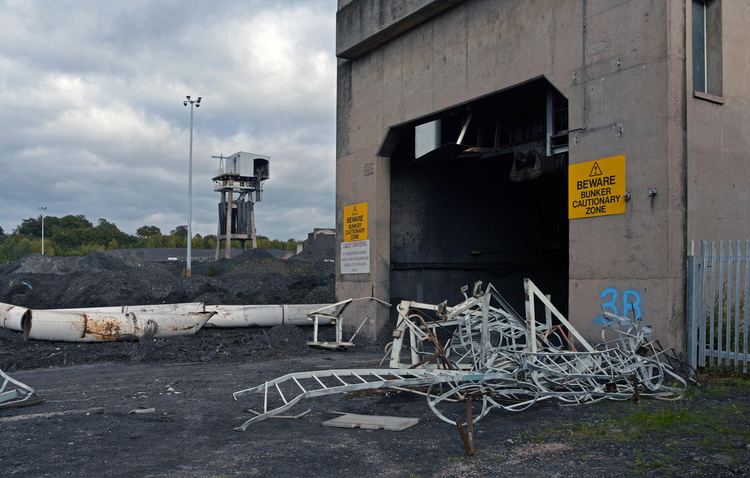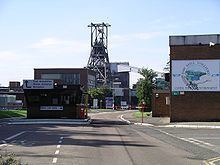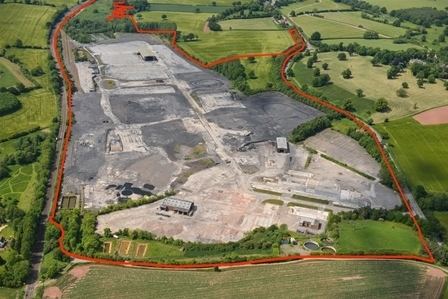Active 1956–2013 Opened 1956 | Country United Kingdom Closed 2013 | |
 | ||
Similar Thoresby Hall, Drax power station, Agecroft Colliery, Lawley Street railway st, Pooley Hall | ||
Daw mill mining monument tribute
Daw Mill was a coal mine located near the village of Arley, near Nuneaton, in the English county of Warwickshire. The mine was Britain's biggest coal producer. On 7 March 2013 the owner, UK Coal, announced the mine would be closed following a major fire. It was the last remaining colliery in the West Midlands.
Contents
- Daw mill mining monument tribute
- Daw mill colliery warwickshire uk
- The mine
- Transport
- Accidents
- Closure
- Redevelopment plans
- References

Daw mill colliery warwickshire uk
The mine

Daw Mill mined a five-metre thick section of the Warwickshire Coalfield (known as the Warwickshire Thick) in the north of the county. It was owned and operated by UK Coal and in 2008 employed 680 people.

The two shafts that served Daw Mill were first sunk between 1956 and 1959, and 1969 and 1971 respectively. The mine was a natural extension of the former collieries Kingsbury Colliery and Dexter Colliery, both of which have also closed. In 1983 an inclined tunnel linking underground workings with the surface was completed. This drift mining enabled Daw Mill to increase its production capacity as it removed the often time-consuming process of winding coal up the shafts.

Daw Mill was the last surviving mine in a county that once had 20 operating collieries. In 2008 it excavated 3.25 million tons of coal, beating a 13-year-old record for annual output at a British coal mine set at Selby in North Yorkshire.
Transport

The colliery was situated on the Birmingham to Nuneaton Line, just east of the former Shustoke railway station. Trains were operated by GB Railfreight.
Accidents

Three men were killed at Daw Mill in mining accidents in 2006 and 2007. In 2011 UK Coal was fined £1.2 million for safety breaches.
On 22 February 2013, a major fire broke out 500 metres (1,600 ft) underground, described as the worst underground blaze in Britain for 30 years. UK Coal and Warwickshire Fire and Rescue Service confirmed that 92 workers were safely extracted. As of 7 March 2013 the fire had still not been fully extinguished. It was initially estimated that remedial work to the colliery could take between three and six months, making a return to production subject to a further review, resulting in the possible immediate closure of the mine.
Closure
On 14 March 2012 it was reported that UK Coal had begun a consultation process as part of plans for a company restructure which could see the closure of the mine in 2014.
On 10 July 2012, UK Coal had suggested that if High Speed 2 were to be built, then Daw Mill would be forced to close due to associated development and the effects on local groundworks.
On 7 March 2013 UK Coal announced the closure of the mine, due to the destructive fire which had extensively damaged it, with the plan to make most of the 650 staff redundant.
Redevelopment plans
In July 2013, the ownership of the Daw Mill site was transferred to property redevelopment firm Haworth Estates after UK Coal went into insolvency. Haworth subsequently submitted plans to North Warwickshire Borough Council to turn the land into a business park, which included proposals for an HGV depot, but withdrew their application in October 2014 after encountering opposition from local residents and councillors, who felt the scheme would be unworkable. One of their key objections was the volume of traffic that would be generated in the local area. Haworth said they would submit a revised proposal. A fresh set of plans were put forward in November. These included a "low-level rail hub", and a one third reduction in the size of the development. The proposals were further refined, and a second revised application made in July 2015.
Having initially objected to the proposals on the grounds of the size of the road network that would be needed to support the new development, the Highways Department of Warwickshire County Council announced in October 2015 that it would now support the development. The decision prompted local MP Craig Tracey, whose North Warwickshire constituency includes the site, to write to the Department urging it to reconsider its stance. His letter highlighted the potential impact the business park would have on the nearby town of Coleshill, which he said would be adversely affected by the increase in traffic flow. North Warwickshire Borough Council's planning committee unanimously rejected Haworth's proposals on 3 November, citing fears that the development would cause "substantial" harm to the local green belt. Haworth announced that it would appeal the decision.
